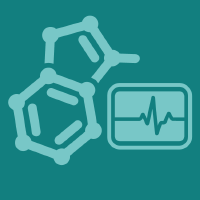Topic Menu
► Topic MenuTopic Editors


Advances in Chemistry, XXVIth International Galician Portuguese Conference on Chemistry
Topic Information
Dear Colleagues,
The International Galician–Portuguese Conference on Chemistry is celebrating its 26th edition in 2022. This is the first time since the beginning of the COVID-19 pandemic that scientists can attend this conference in person again to exchange their ideas. The conference keeps in its name its historical roots because, more than 25 years ago, the Galician and Portuguese Associations of Chemists decided to create a periodic forum to meet in person, share knowledge, and incubate collaborations. Furthermore, the venue of the conference alternates annually between Portugal and Spain. The conference was envisioned as a forum where master's and Ph.D. students take a predominant role to showcase their own research and establish friendly relations with other colleagues. Since those early days, the conference has attracted people from all over Portugal, Spain, some nearby countries, and, recently, an increasing number of Latin-American scientists. In the last editions, ca. 400 communications were presented (including posters and oral presentations). We are absolutely honoured by the Plenary Conferences delivered by two Nobel Laureates on chemistry: Professor Tomas Lindahl (Nobel Prize 2015) and Professor Stanley Whittingham (Nobel Prize 2019). This year, the conference is taking things a step further and presenting the opportunity for relevant communications presented in its different sessions to be published. For this, we encourage attendants to prepare scientific papers and submit them to the Special Issues of the journals that the prestigious Open Access Publisher MDPI has opened for us. There is no doubt this would be a major opportunity and exciting challenge for young researchers. Thank you very much to all of you for participating and to MDPI for their support.
Dr. Jose Manuel Andrade
Dr. Luis Cuadros-Rodríguez
Topic Editors
Participating Journals
| Journal Name | Impact Factor | CiteScore | Launched Year | First Decision (median) | APC |
|---|---|---|---|---|---|

Chemosensors
|
4.2 | 3.9 | 2013 | 17.9 Days | CHF 2700 |

Foods
|
5.2 | 5.8 | 2012 | 13.1 Days | CHF 2900 |

Molecules
|
4.6 | 6.7 | 1996 | 14.6 Days | CHF 2700 |

Nanomaterials
|
5.3 | 7.4 | 2010 | 13.6 Days | CHF 2900 |

Toxics
|
4.6 | 3.4 | 2013 | 14.7 Days | CHF 2600 |

MDPI Topics is cooperating with Preprints.org and has built a direct connection between MDPI journals and Preprints.org. Authors are encouraged to enjoy the benefits by posting a preprint at Preprints.org prior to publication:
- Immediately share your ideas ahead of publication and establish your research priority;
- Protect your idea from being stolen with this time-stamped preprint article;
- Enhance the exposure and impact of your research;
- Receive feedback from your peers in advance;
- Have it indexed in Web of Science (Preprint Citation Index), Google Scholar, Crossref, SHARE, PrePubMed, Scilit and Europe PMC.

